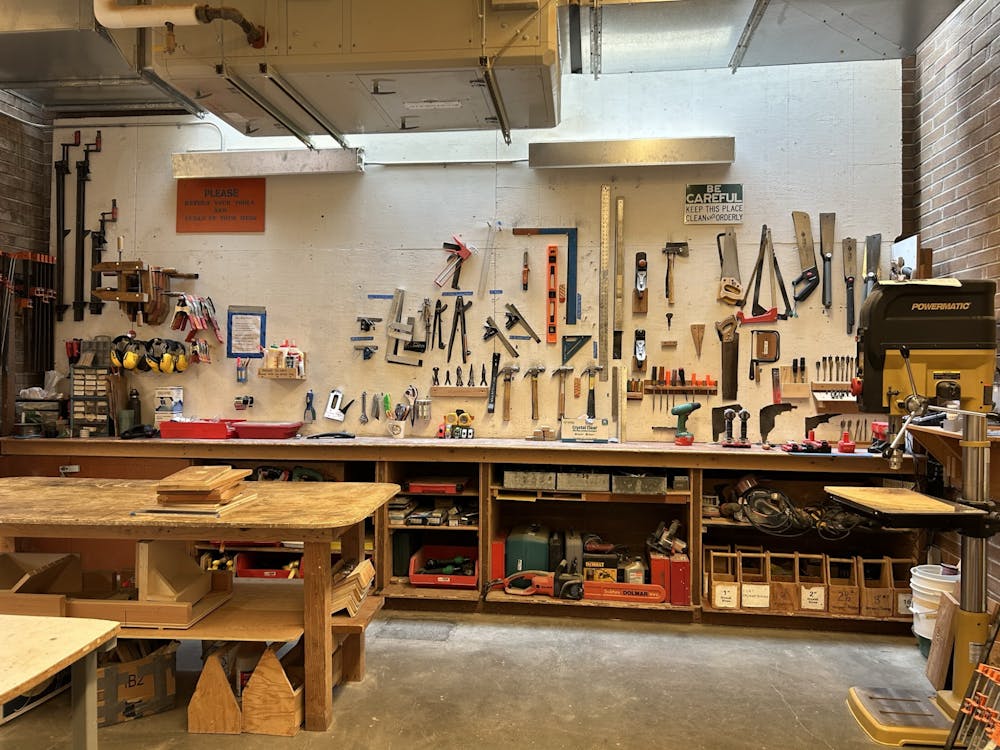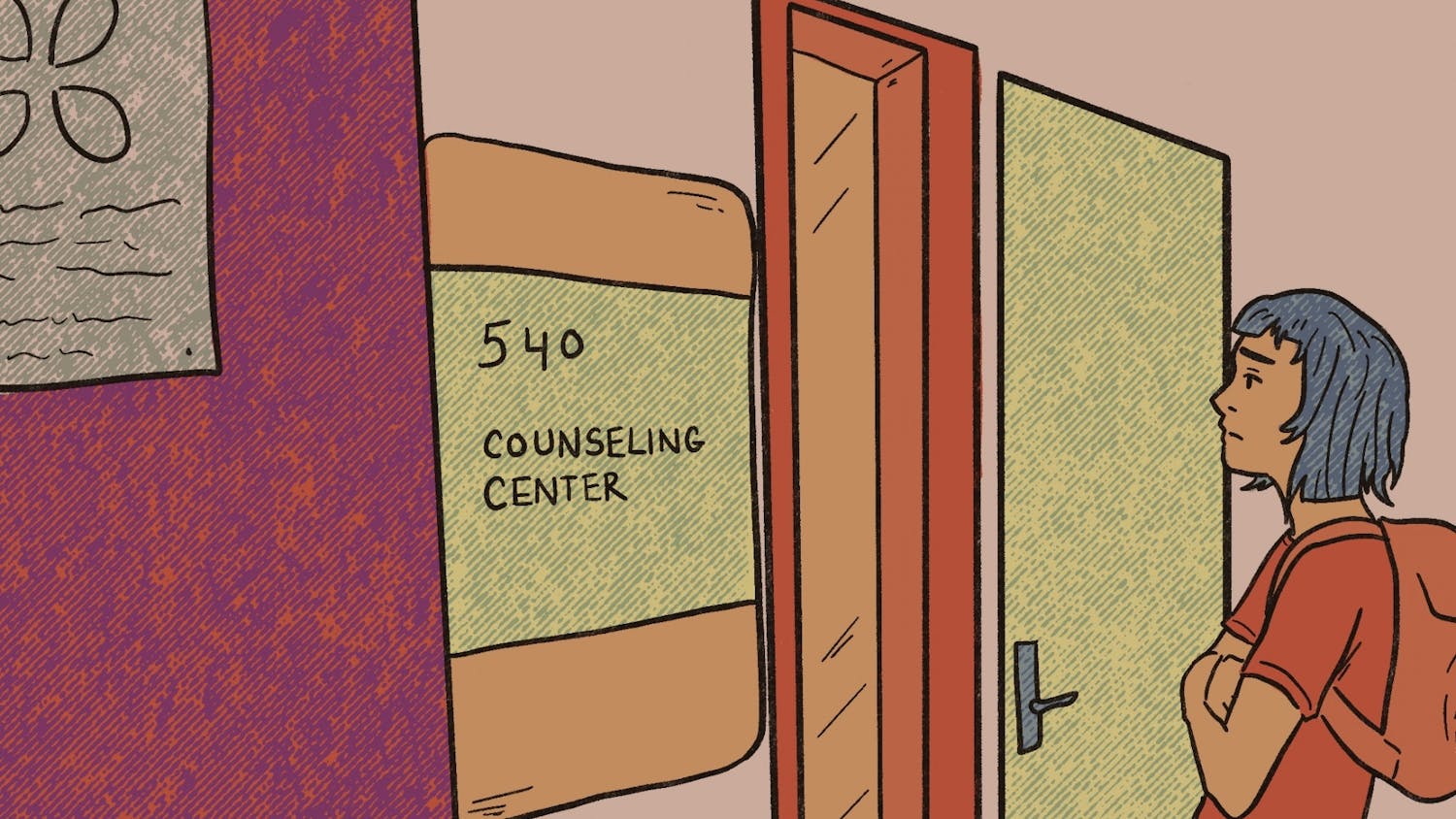Western Washington University opened the STEAM Lab – a makerspace designed to provide students with all the tools they might need for their creative ventures – on April 14, open most Fridays from 10 a.m. to 6 p.m.
The lab, located in the Art Annex, is home to many tools, including 3D printers, laser cutters, engravers, a drill press, assorted power tools and sewing machines. A woodshop and metal shop are also located in the center, although the metal shop is not currently available for general use.
Students can access most of the space free of charge, but in order to use the woodshop a quarterly fee of $60 is required.
“I think it's worth it. If you break it down, it's like $18 a month - that's pretty cheap to have all this,” said Sasha Petrenko, associate professor and manager of the STEAM center.
To access the center, interested students fill out an online form where they explain what they hope to create. From there, they are enrolled in a Canvas module, where they can learn about the tools they want to use, take an online quiz, and then sign up for an in-person workshop. Once they have completed the workshop, students are free to use the tools and let their creative juices flow.
Tools must be reserved ahead of time, and the lab space is limited to 10 students per hour. Students can sign up for up to four consecutive hours.
In addition to Petrenko, the center is run by six student staff who are trained to handle the tools.
“Most of the people here are work-study, and they come from a bunch of different majors. Some of them are art students, some of them are not art students,” said Ash Sanders, a third-year psychology student at Western and one of the lab’s staff members.
Western is also home to a similar center located in the Ross Engineering Technology building. The Makerspace has tools such as laser cutters, industrial sewing machines, a soldering station, computers, a vinyl cutter and 3D printers.
“A lot of the background for the STEAM Center comes out of just how overwhelmed the engineering maker space is,” Sanders said.
The Makerspace served over 1,400 students during the 2021-22 school year, according to the impact report. This number does not include students who used the space during classes or lab sessions.
“[The Makerspace] is very STEM-oriented and engineering-oriented,” Sanders said. “So [the STEAM center] just kind of includes a smaller hands-on space where people can come and create art without having to be in the art department or being enrolled in art classes.”
Petrenko worked with Jill Davishahl, the director of Pre-Engineering Program Development who developed the engineering Makerspace, to organize the STEAM center and develop the Canvas module system.
“We're kind of like a little sister to The Makerspace,” Petrenko said.
Petrenko hopes the space can offer an area for industrial design students or engineering students to express themselves in a less structured environment.
“We also are really dedicated to this cross-disciplinary community that we hope to create through The Makerspace and the STEAM Center, where you get students from all across campus working together,” Petrenko said.
The space is funded by the Department of Art and Art History and the Student Technology Fund. The Student Technology Fee is added to student tuition, $35 for full-time students and $17.50 for part-time students. This fee helps support student access to technology at Western. The money is added to the STF, and proposals can be made to receive funding.
“One of the main requirements is that the tools will be accessible to all students,” Petrenko said.
Accessibility can be difficult when many of the tools in the center require training, and the STEAM Lab project was proposed three times before funding for the center was awarded.
“It was just really important to us to make sure our students had access to these new digital technologies, given that they're going out into a very competitive, creative work environment,” Petrenko said.
Jason Davies is the education coordinator for the Bellingham Makerspace, a local non-profit that provides tools similar to those found in the STEAM center. Located in the Bellis Fair Mall, members pay a monthly fee for access to the tools and workshops.
“Maker spaces are important because they're self-directed,” he said.
While some students thrive when given direct instruction, others need the freedom to be creative and make mistakes, which can be difficult in a traditional university environment.
Davies encourages students to take a look at the workshops offered on the Bellingham Makerspace website and see if there are any topics that interest them.
“[Makerspace] has a bigger possibility to ignite the imagination and creativity and the passion for learning than would a lot of lecture classes,” he said.
In fall 2023, students will also be able to access three new tools – the ShopBot Buddy CNC machine, a Juki Industrial Sewing Machine and a Jet Wood Lathe.
Looking ahead, the center is planning two wood shop orientations. Sign-ups can be found on the STEAM Lab website.
Ava Glaspell (she/her) is a campus news reporter for The Front this quarter. She is a first year journalism/news ed major. Outside of reporting, Ava enjoys climbing, eating ice cream, and jumping into the ocean. You can reach her at avaglaspell.thefront@gmail.com.






